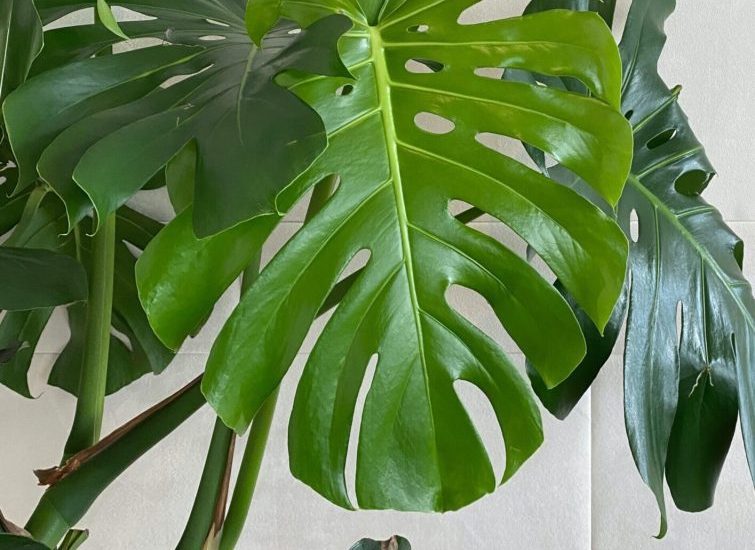Evergreen Trees: Keeping Their Leaves Year-Round
Evergreen trees are a popular choice for landscaping and gardening due to their year-round foliage and ability to provide privacy. These trees retain their leaves throughout the year, unlike deciduous trees that shed their leaves in the fall. Evergreens come in a variety of shapes and sizes, from towering pines to low-lying junipers, making them a versatile option for any outdoor space.

One of the main benefits of evergreen trees is their ability to provide year-round privacy. Whether you’re looking to block out noise from a busy street or create a secluded outdoor space, evergreens can be a great solution. They also provide a natural barrier against wind and snow, helping to protect your home and garden from the elements.
In addition to their practical benefits, evergreen trees are also prized for their beauty. Many species have attractive foliage, such as the glossy dark green needles of the eastern white pine or the silvery-blue leaves of the Colorado blue spruce. Some evergreens even produce colorful flowers or berries, adding even more visual interest to your outdoor space.
Characteristics of Evergreen Trees
Evergreen trees are a unique type of tree that keeps its foliage green throughout the year. These trees are known for their ability to adapt to different environments and maintain their green color, even in harsh weather conditions. In this section, we will discuss the characteristics of evergreen trees, including their leaf structure, common species, and environmental benefits.
Leaf Structure and Adaptations
Evergreen trees have a unique leaf structure that allows them to survive in different environments. Unlike deciduous trees, which lose their leaves in the fall, evergreen trees have leaves that remain on the tree year-round. The leaves of evergreen trees are typically dark green in color, and they come in a variety of shapes and textures. Some evergreen trees have needles instead of leaves, such as pine trees, which are known for their long, thin needles.
Evergreen trees have adapted to their environment by developing a thick, waxy layer on their leaves that helps to protect them from harsh weather conditions. This extra layer of protection helps the tree to retain moisture and prevent damage from wind and snow. Evergreen trees also have strong roots that help them to absorb nutrients from the soil and stay firmly anchored in the ground.
Common Evergreen Species
There are many different species of evergreen trees, each with its own unique characteristics. Some common evergreen species include pine trees, holly trees, and olive trees. Pine trees are known for their long, thin needles and their ability to grow in harsh environments. Holly trees are known for their glossy leaves and bright red berries, which make them a popular choice for holiday decorations. Olive trees are known for their silvery-green leaves and their ability to produce delicious olives.
Environmental Benefits and Uses
Evergreen trees provide a number of environmental benefits, including producing oxygen through photosynthesis and providing habitat for wildlife. They are also used for a variety of purposes, such as building materials, paper products, and essential oils. Evergreen shrubs are often used for landscaping and can provide a beautiful backdrop for gardens and outdoor spaces.
In addition to their environmental benefits, evergreen trees are also valued for their longevity. Unlike deciduous trees, which have a limited lifespan, evergreen trees can live for hundreds of years and provide shade and beauty for generations to come.
Overall, evergreen trees are a unique and valuable part of our natural environment. Their ability to adapt to different environments and maintain their green color year-round makes them a popular choice for landscaping and a valuable resource for a variety of industries.
Caring for Evergreens
Evergreens are a great addition to any garden or landscape. They are known for their ability to keep their leaves year-round, which makes them a popular choice for homeowners who want to maintain a lush and green garden throughout the year. However, like any other plant, evergreens require proper care and maintenance to thrive. Here are some important tips for caring for evergreens:
Soil and Water Requirements
Evergreens require well-drained soil that is rich in nutrients. They prefer slightly acidic soil with a pH level between 5.0 and 6.5. It is important to water evergreens regularly, especially during dry periods, to prevent the soil from drying out. However, overwatering can lead to root rot, so it is important to strike a balance. A good rule of thumb is to water deeply once a week, rather than shallowly every day.
Pruning and Maintenance
Pruning is an important part of maintaining evergreens. It helps to promote healthy growth and prevent the tree from becoming too dense. The best time to prune evergreens is in late winter or early spring, before new growth begins. It is important to use sharp pruning shears and to make clean cuts to avoid damaging the tree. Regular trimming can also help to maintain the shape and size of the tree.
Landscaping with Evergreens
Evergreens are versatile and can be used in a variety of landscaping designs. They are great for creating windbreaks and privacy screens, as well as adding texture and color to a garden. When planting evergreens, it is important to consider their mature size and growth habits. Some evergreens can grow quite large, so it is important to leave enough space for them to grow.
Overall, evergreens are a great addition to any garden or landscape. With proper care and maintenance, they can provide year-round beauty and enjoyment.


